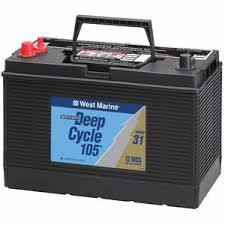Intro
Quick Navigation
Of course, you will always find cars and bikes on the road and boats on a body of water. Every automotive’s ability to move progressively on different surfaces is due to the features that hold them together. However, something else powers these features – the battery. Car batteries produce electric currents needed to start them and power some accessories. Likewise, you will find boats and any marine automotive have theirs too.
A Boat Battery is a bit different from a Car Battery; however, they perform the same function and undergo similar mechanisms. That means you also have to charge the battery, so it doesn’t stop working. The shocking thing, however, is that not everyone knows how to charge a boat battery. Hopefully, with this article, you can learn one or two about it if you belong to that category of people.
See something you should know about Car Batteries.
Questions
What is a Boat Battery Like?
Every angler with a modern fishing boat – novice or professional should know many important things about it. The active operation depends on what you know and what you don’t know. In this case, the battery is of utmost concern because it powers every essential function or feature. Without the battery providing electrical current, there is no propulsion.
Marine vehicles often use three types of batteries, and you will find them at dealer shops most of the time. The various types are:
- Marine Starting or Cranking Battery
- Deep Cycle Battery
- Hybrid or Dual-Purpose Battery
, and
Knowing what to choose is quite the challenge, but it wouldn’t be with the following details about to be provided.
How to Choose a Battery Type?
The first type of battery is the Marine Starting or Cranking Battery, often known to start the boat’s outboard motor to move underway. It can only produce a low number of currents needed to begin operation. When it does what it has to do, the alternator recharges it while the outboard is running. Using this battery to power trolling motors, however, is not ideal.
The second type of battery is the Deep Cycle Battery. It is the ideal choice of battery to power a boat. It produces a low to a moderate number of currents; thus, it is different from the Starting Battery in all respect. They are designed to withstand discharge and recharge, which means they are perfect for trolling motors. This battery can be used for longer while scoring through depths.
The last battery is the Hybrid or Dual-Purpose Battery that acts as both Deep Cycle and Starting Batteries. It is simple with optimal performance, even with a trolling motor.
Out of all these battery types described, the Deep Cycle Battery is the perfect choice for all marine vehicles, including Boats. You can always count on it to deliver excellent performance over a long time. However, there is a constant need to recharge when the power is down; the battery shouldn’t get damaged or destroyed due to neglect.
How to Charge a Deep Cycle Boat Battery?
There are a few tips you need to charge your boat battery efficiently. They include:
- Prep the Battery
Different manufacturers have their unique Deep Cycle Batteries; therefore, it is only reasonable for you to be aware of every detail beforehand. One of the things you should do is read up on how to charge them – the process could vary from one manufacturer to another.
When you are done with that, you should look out for some features, especially with water being an essential element in a Deep Cycle Battery. That way, you are prepping the battery for a charging session.
- Check the water/liquid levels.
- Find irregularities, such as corrosion. The appearance of corrosion means the battery is damaged or faulty.
- Check every part of the battery for swell or leaks, or cracks.
- Choose a Charger
The choice of charger is another sensitive issue you must address before charging a boat battery. Every charger has a specified amount of current output that determines its suitability with a battery. These three common current outputs are 5 amps, 10 amps, and 15 amps. Hence, you need to be careful and choose that which is compatible with the battery itself.
- Discharge Vs. Not Discharge
The next part you proceed with before charging the battery is the Discharge Vs. Not Discharge. The choice of what to do depends on the state of the battery.
That being said, if you notice the battery at 50% capacity or higher, you should start charging. However, it would help if you didn’t allow the battery to be at its lowest capacity so that the lifespan won’t start retrogressing. Ideally, you will be straining the battery at its lowest.
- Check the Charge and Set Timer
Now that you have checked all the necessary things involved, you can connect the charger to a battery. While you do this, you should set a timer so that you don’t overcharge or undercharge – either destroys the life of a battery gradually. For each current output of a charger, there is a specified time for charging.
5 amps Charger takes 6 hours at 25% discharge value.
10 amps Charger takes 4 hours at 25% discharge value.
15 amps Charger takes 2 hours at 25% discharge value.
What are the Tips for Battery Longevity?
Protecting the lifespan of your boat battery should be a top priority to you as an angler. The reason is that it solely handles every single function or operation that takes place in a boat. Maintenance is something you should invest so much in for your safety. Below are three useful tips for battery longevity.
Maintain shallow discharges for better battery life.
Charge batteries after use.
Do not undercharge or overcharge.
Discover the various symptoms of a Bad Battery here.
Conclusion
If your problem is not knowing how to charge a boat battery, this article has shown you the right steps to take. Do as described above, and maintain your boat’s battery life and any marine vehicle you have.

